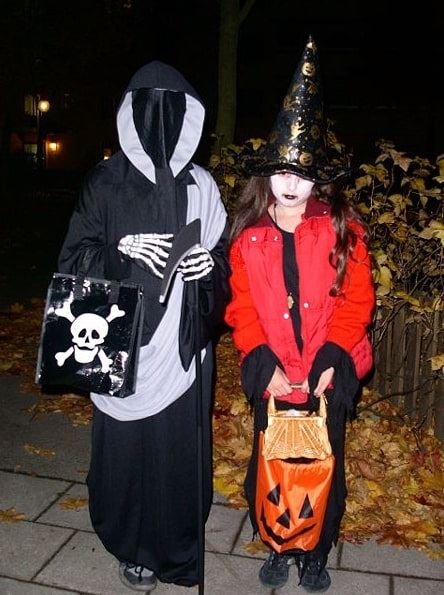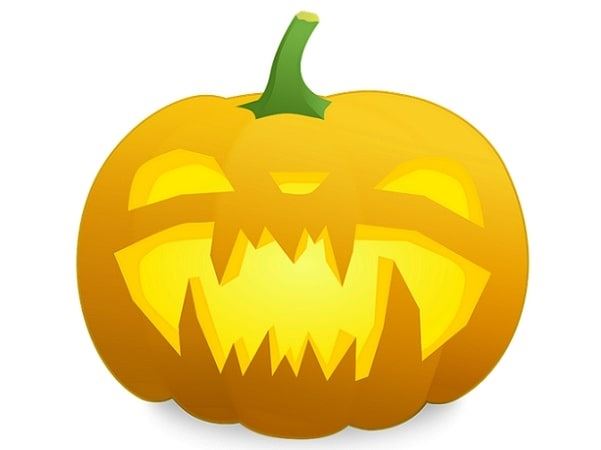Introduction: In this article, Gena Philibert-Ortega writes about “trick or treating” from earlier times. Gena is a genealogist and author of the book “From the Family Kitchen.”
Did you trick or treat when you were a child? You might be surprised to find out that the idea of going house-to-house, knocking on doors with a demanding call for “trick or treat,” is a relatively new idea. While the origins of Halloween are older, the idea of children dressing up and going door to door in the United States first started in the 1920s – and even then, it wasn’t a nationwide activity for decades.*

In my own search through GenealogyBank’s Historical Newspaper Archives using the phrase “trick or treat,” I found little mention of this activity until the late 1930s. Interestingly, I found a 1950 Richmond, Virginia, newspaper article that described what trick or treating was to readers, indicating possibly that even then it wasn’t a commonplace activity.
The article explained:

Did you trick or treat? Old newspapers give us a look at trick or treating in Halloweens past.
Trick?
I never committed any tricks in my days of trick or treating. My only goal was to get as much chocolate candy as possible! Of course, I remember those kids who used Halloween as an excuse to cause mischief. They smashed decorated pumpkins, toilet-papered the tallest trees in a person’s yard, or ignored signs to “take 1 candy only” and emptied unattended candy bowls into their pillow cases, but I don’t have any memory of larger destructive acts.
In case you mistakenly think that kids today are more disrespectful than in the “good old days,” newspaper articles from the 1930s indicate that destruction of property, including soaping windows, was somewhat commonplace when a “treat” was not to be had. Some communities took action to limit the mischief.
As this article reported:
“Lewiston will be guarded tonight against the mischief of witches and hobgoblins by an augmented police force and youth patrols which will attempt to see that the city does not suffer too great harm at the hands of spirits roaming abroad on Halloween.”
It would seem that kids were/are not the only ones pulling tricks. Adults also see it as an excuse to pull a trick or two. When my sons went trick or treating in our new neighborhood for the first time, my then 9-year-old received a “treat” wrapped up in tin foil that looked promising. He eagerly came home to unwrap that surprise only to find it was a small block of wood and a plastic fishing worm!
Treat?
Trick or Treating hasn’t always been a matter of running door to door collecting candy through the neighborhood. I was surprised to hear from some friends that in decades past, in order to get a treat, they had to do some sort of “act” such as singing, dancing, or telling a joke.
Genealogist Sue McCormick remembers that for Halloween 1939 she dressed up as Dorothy from the Wizard of Oz, complete with a stuffed Scotty dog. At each house she trick or treated at, she sang a line from the song “Over the Rainbow.” She says, “Halloweens were like that, a song, a short story, a ‘knock-knock’ joke. We all did something like that as we trick or treated.”
Older newspaper articles also document these quid pro quo Halloween arrangements, like this 1939 Omaha, Nebraska, newspaper article that reported that Mrs. D. G. Sturrock, 3904 South Twenty-fifth street, was serenaded by a group of little girls for their treat.
What’s Your Halloween Story?
What are your memories of Halloween? One thing I’ve learned from interviewing people about their Halloween memories is that they are more diverse than I would expect. The costumes, activities, even what people used to carry the candy (orange plastic pumpkins vs. a pillow case) vary depending on time and place. Take some time to write down and share your memories this Halloween season. I bet your kids or grandkids would love to see a photo of you in your costume.
Happy Halloween!
* “The History of Trick or Treating is Weirder Than You Think,” Smithsonian (https://www.smithsonianmag.com/smart-news/the-history-of-trick-or-treating-is-weirder-than-you-thought-79408373/: accessed 5 October 2017).
